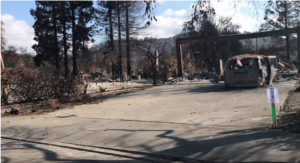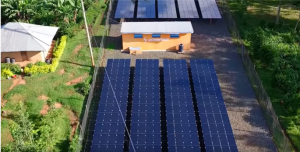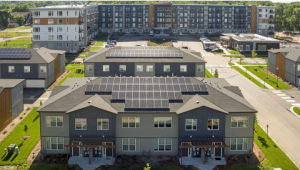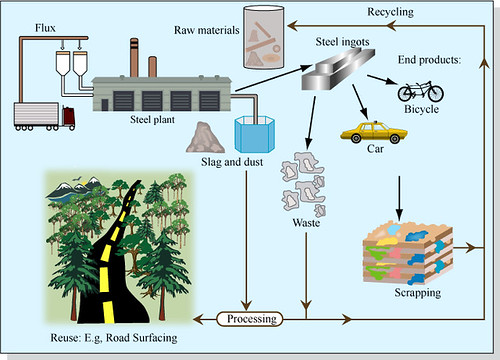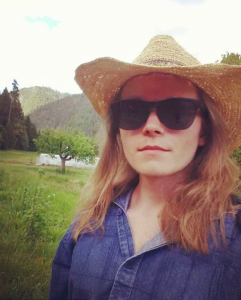This post is a guest post from a student in SS3815 Energy and Society who wishes to remain anonymous.
Most of us are somewhat aware of industrial practices along with a high school level understanding of ecology, but what about their interconnection? Can two completely different topics combine for a new concept or understanding? And how does it relate to sustainability?
“Industrial ecology is the study of industrial systems aimed at identifying and implementing strategies that reduce their environmental impact. Industries, such as manufacturing and energy plants, extract raw materials and natural resources from the earth and transform them into products and services that meet the demands of the population” (study.com). Industrial ecology works in a way similar to that of a workplace or school sustainability initiative for recycling or net zero waste, but to a deeper and grander scale. A forest’s ecosystem may give tree saplings to mammals and insects, but the surviving saplings grow big and strong. These trees provide cover from the elements, as well as shelter for other species. They also act as carbon sinks, providing clean oxygen. This cycle of environmental sustainability is what industrial ecologists are looking to achieve.
When Eagle Mine was first proposed to the Marquette area, there was severe backlash from the community regarding its environmental impact on the nearby Salmon River. Their skepticism was understandable, a simple Google Map satellite search will show you the nearby retention ponds of Empire Mine, among others, with a remarkable color of orange. In case you didn’t already know this: water is not orange in its natural state. Local fishermen opposed the mine on the grounds of mining’s notorious mark on nearby bodies of water and land, so proper measures were put in place.
Eagle Mine Fly Over (Links to an external site.)
Firstly, the mine is not open-face, it is an underground operation. This limits the dust exposure compared to open-face or mountaintop mining, whose presence lasts long after operations cease. Second, truck loading takes place indoors, further reducing the potential dust travel. Trucks and boots have designated pathways for travel to prevent exposure off the site. There is even a water treatment center inputting from the site and outputting into the river. One of the most interesting aspects of exposure prevention is their handling of snow and rainfall. The entire site is concave in so all liquids pool to the central holding ponds. This site is a prime example of industrial ecology because of every aspect to protect the local ecosystem and reduce its overall impact. On top of all this, Eagle Mine plans on returning the site to its former natural state when all is said and done.
Modern Mining – How Eagle Mine produces nickel and copper (Links to an external site.)
When looking at the product of Eagle Mine, said minerals are made into a wide array of products and parts, which in turn can return to the site via phone or truck.
In my Population & Environment course with Dr. Winkler, we ran a website test determining how many earths would be required to live if everyone lived like the test taker. I ended up receiving a score of about 1.5 earths, but I wanted to test some options. The life habit that created the biggest jump was the amount of trash one produces. By adding a few pounds to my weekly trash output, my earths jumped up to almost 3 whole earths. Industrial ecology is an important term to understand because it is a relatively new concept with future consequences. Industrial waste is a topic that needs to be addressed because the reduction of overall waste and waste streams is one of the most significant ways to reduce its environmental impact. Ever seen a loaded truck carrying brand new vehicles down the highway? Each vehicle is wrapped in single-use plastic that is battered by the wind, and some even falls off. When the vehicles reach their final destination, this plastic is stripped off and the car is stored elsewhere. How do I put this lightly…do we really need to continue to manufacture single use plastics? Obviously, there are exceptions to this, particularly medical equipment, but even then, we can invest in alternate materials. Ford Motor Company’s most recent sustainability report details its net zero waste initiative, most notably its near zero landfill output in the United States at most sites. An increasing number of companies are moving towards zero landfill waste, which is incredibly impressive considering the amount of office waste that can accrue.
It can be said that industrial ecology is similar to life cycle analysis, which is an assessment of environmental impacts associated with all the stages of a product’s life from raw material extraction through materials processing, manufacturing, distribution, use, repair and maintenance, and disposal or recycling. Life Cycle Assessments look into everything that occurs cradle-to-grave when it comes to products. In other words, from pre-manufacturing to disposal. This can be inversely related to industrial ecology because the industry is the cause while the product carries the effect. Think of how a Red Solo Cup takes over 400 years to fully decompose, how can a company change the material of the famous Red Solo Cup so it can decompose in 10 years? How does the Red Solo Cup manufacturer justify making products that will last centuries into the future when none of the current generation will be alive to experience it? I would certainly hope there are environmental policies in place to counter overdue decomposition in the future, but what can a company do right now to counter? Gone are the days of simply throwing trash away- out of sight, out of mind– and here are the days of sustainability. I’d find peace in working for a company with such strong devotion to internal standards, and the standards of the surrounding environment.
This term deserves to be normalized in order to become a pillar in sustainability efforts and studies. I think that industrial ecology can be a catalyst for severe societal change. It’s known that work environment and cultures influence our own environment and culture at home, so sweeping ecological successes could have trickle-down effects.

